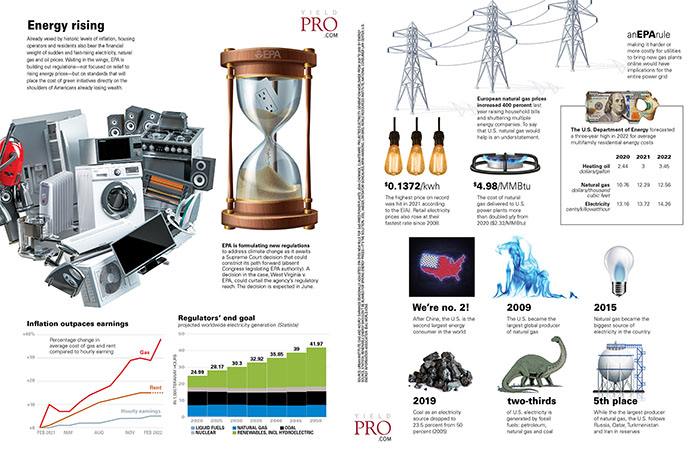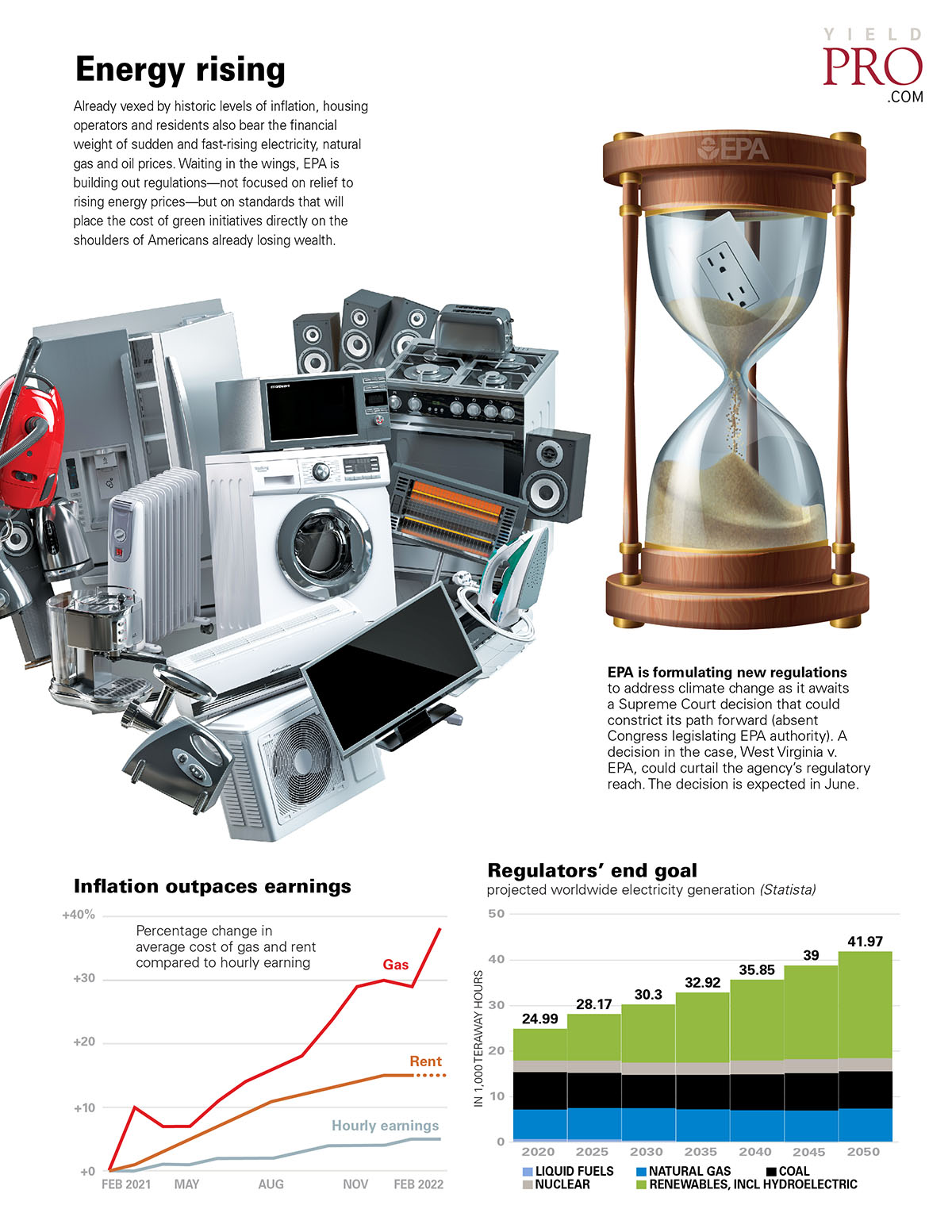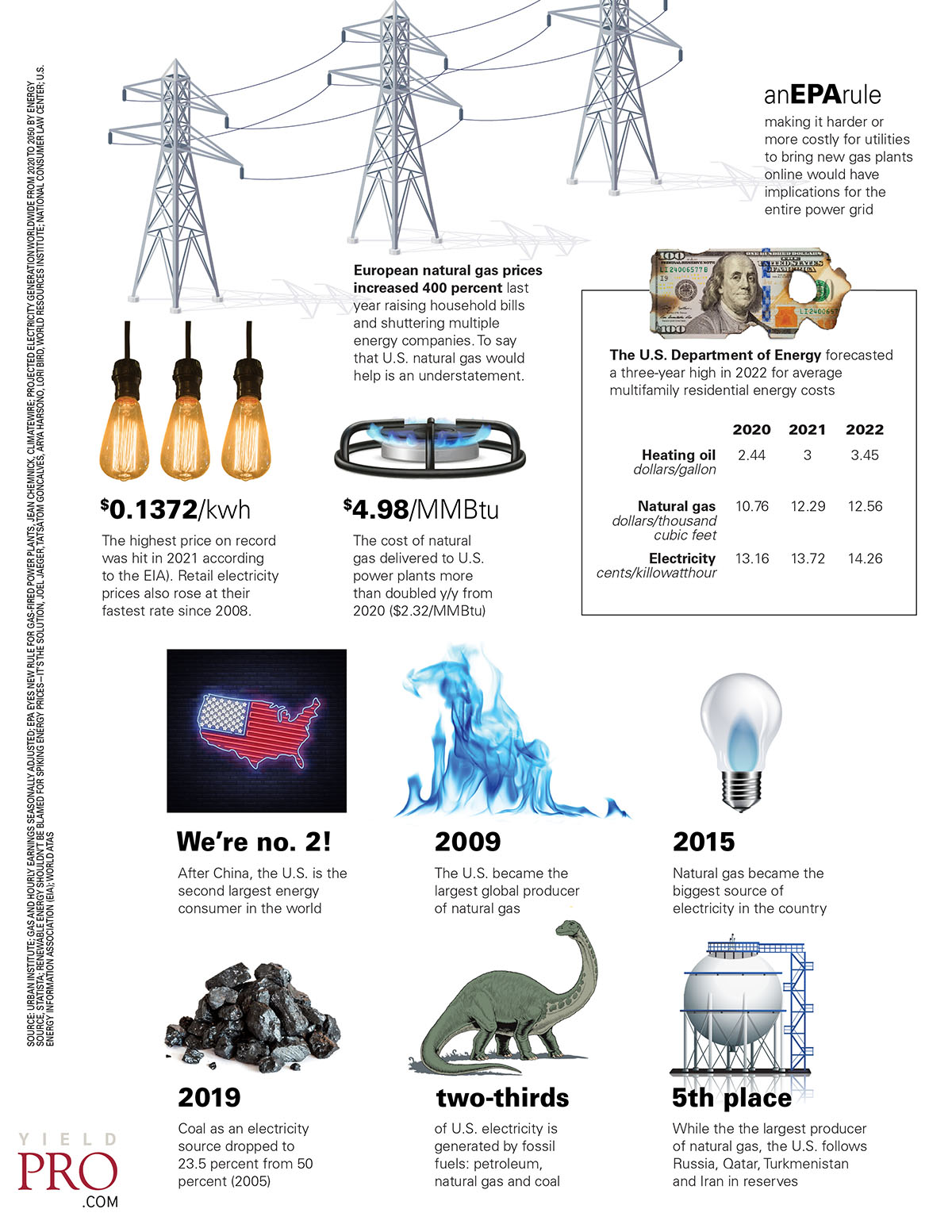Energy rising
Already vexed by historic levels of inflation, housing operators and residents also bare the financial weight of sudden and fast-rising electricity, natural gas and oil prices. Waiting in the wings, EPA is building out regulations—not focused on relief to rising energy prices—but on standards that will place the cost of green initiatives directly on the shoulders of Americans already losing wealth.
EPA is formulating new regulations to address climate change as it awaits a Supreme Court decision that could constrict its path forward (absent Congress legislating EPA authority). A decision in the case, West Virginia v. EPA, could curtail the agency’s regulatory reach. The decision is expected in June.
An EPA rule
making it harder or more costly for utilities to bring new gas plants online would have implications for the entire power grid
European natural gas prices increased 400 percent last year raising household bills and shuttering multiple energy companies. To say that U.S. natural gas would help is an understatement.
$0.1372/kwh
The highest price on record was hit in 2021 according to the EIA). Retail electricity prices also rose at their fastest rate since 2008.
$4.98/MMBtu
The cost of natural gas delivered to U.S. power plants more than doubled y/y from 2020 ($2.32/MMBtu)
We’re no. 2!
After China, the U.S. is the second largest energy consumer in the world
2009
The U.S. became the largest global producer of natural gas
2015
Natural gas became the biggest source of electricity in the country
2019
Coal as an electricity source dropped to 23.5 percent from 50 percent (2005)
Two-thirds
of U.S. electricity is generated by fossil fuels: petroleum, natural gas and coal
5th place
While the largest producer of natural gas, the U.S. follows Russia, Qatar, Turkmenistan and Iran in reserves















